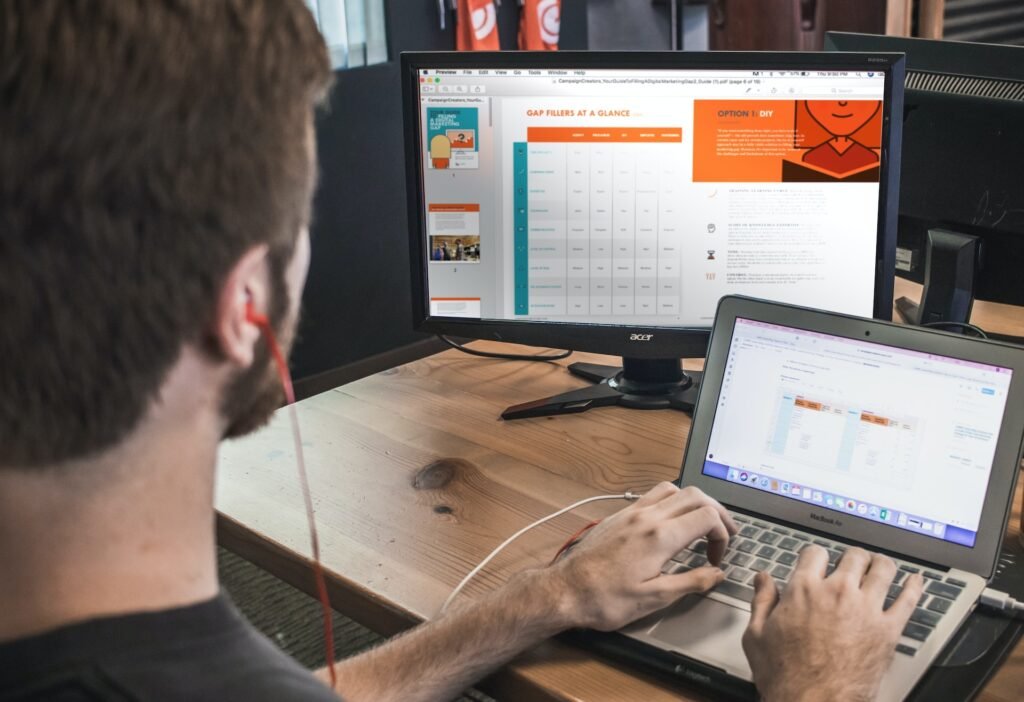
Is UX Design a Stressful Job? Explore User Experience
Introduction
In the fast-paced digital age, user experience (UX) designers play a pivotal role in shaping the digital landscape. But with great responsibility comes great stress. Are UX designers happy in their careers, or is the world of UX/UI design more stressful than it seems? In this article, we’ll dive into the intricacies of UX design, explore the factors that make it stressful, and discuss effective strategies to avoid stress in this exciting but demanding field.
Lack of Company Awareness About UX
The Underappreciated Craft
One of the most significant sources of stress for UX designers is the often underappreciated nature of their craft. Many companies, especially those not well-versed in the intricacies of user experience, fail to recognize the critical role UX design plays in the success of their products.
UX designers invest time and effort in understanding user behaviors, conducting research, creating wireframes, and designing intuitive interfaces. However, when their work goes unnoticed or is not given due importance within a company, it can be disheartening. This lack of recognition can lead to feelings of frustration and undervaluation, contributing to stress levels.

Imposter Syndrome
The Internal Struggle
Imposter syndrome is a psychological phenomenon that affects many professionals, including UX designers. It is characterized by persistent self-doubt and the feeling of being a fraud despite evidence of one’s competence.
In the world of UX/UI design, where creativity and innovation are vital, designers may constantly question their abilities. They might compare themselves to their peers, believing that others possess more knowledge or talent. These self-imposed expectations and doubts can create a constant state of anxiety and stress.
To combat imposter syndrome, UX designers often need to remind themselves of their accomplishments, seek mentorship and support from peers, and understand that learning and growth are natural parts of their profession.
Long Hours and Tight Deadlines
Racing Against the Clock
UX/UI designers frequently face demanding schedules and tight project deadlines. Creating an exceptional user experience is a meticulous process that requires time for research, ideation, testing, and refinement. However, the pressure to deliver a product on schedule can sometimes result in designers working long hours and weekends.
The need to meet deadlines can be both physically and mentally exhausting. Working under such time constraints can compromise the quality of work, lead to burnout, and significantly increase stress levels.
Challenging Problem-Solving
The Art of Creative Solutions
UX designers are, by nature, problem solvers. They tackle intricate challenges related to user interactions, accessibility, and usability. While problem-solving is rewarding, it can also be mentally taxing.
Designing solutions that are intuitive and user-friendly requires a deep understanding of human behavior, psychology, and technology. This constant need for creative problem-solving can lead to cognitive fatigue and stress, especially when faced with complex design dilemmas.
UX designers face a range of stressors in their careers, including the underappreciation of their work, imposter syndrome, tight deadlines, and the demands of creative problem-solving. To thrive in this exciting yet challenging field, designers need to seek recognition for their contributions, address imposter syndrome, manage their work schedules effectively, and find ways to rejuvenate their creativity. By doing so, they can create a more balanced and fulfilling career in UX/UI design.
Constant Learning and Skill Development
Staying Ahead of the Curve
The field of UX design is ever-evolving, driven by technological advancements, changing user preferences, and emerging design trends. While this dynamism keeps the job exciting, it can also be a source of stress for designers who feel the pressure to stay updated with the latest developments.
To navigate this challenge, UX/UI designers should embrace continuous learning and skill development as a fundamental aspect of their profession.

How to Avoid Stress as a UX/UI Designer
Choosing the Right Company to Work For
Selecting the right company is paramount to a successful and stress-free UX/UI career. Research potential employers thoroughly to ensure they prioritize user experience and have a work culture that aligns with your values. Consider factors like company size, industry, and reputation. Joining a company that values and understands UX design can significantly reduce stress related to underappreciation.
Setting Realistic Goals and Expectations
Setting realistic goals and expectations for yourself and your projects is crucial. Overcommitting and taking on too much work can lead to burnout. Instead, prioritize tasks and projects based on their importance and feasibility. Communicate openly with your team and managers about workload and deadlines to avoid unnecessary stress.
Prioritizing Self-Care
Taking care of your well-being is essential in a high-stress profession like UX/UI design. Make self-care a priority by:
Taking Breaks
Regular breaks during work can refresh your mind and prevent burnout. Use techniques like the Pomodoro Technique to structure your work intervals and breaks effectively.
Mindfulness
Practice mindfulness techniques such as meditation or deep breathing to manage stress and stay focused.
Engaging in Hobbies
Pursue hobbies and activities outside of work that bring you joy and relaxation.
Balancing Work and Life
Maintain a healthy work-life balance. Avoid overworking and ensure you have time for personal life and relationships.
Having a Good Manager
A supportive and understanding manager can play a crucial role in reducing stress. Seek out a manager who appreciates your work, provides constructive feedback, and offers mentorship. Open communication with your manager can help address any concerns or challenges you may face.
Self-Awareness and Self-Care
Understanding your limits and recognizing when you need a break is essential. Develop self-awareness to identify signs of burnout or excessive stress. Don’t hesitate to take time off when necessary to recharge and maintain your overall well-being.

How to Avoid Stressful UX Roles
Research Job Opportunities
Investigate potential job roles and companies thoroughly before accepting a position. Look for organizations with a healthy work environment and a strong commitment to UX design.
Set Boundaries
Communicate your boundaries clearly during interviews and job negotiations. Ensure that your future employer respects your work-life balance and provides necessary support.
Continuous Evaluation
Regularly evaluate your job satisfaction and stress levels. If you find yourself in a consistently stressful role, consider exploring other opportunities within or outside the field.
Key Takeaways
In the world of UX design, happiness and fulfillment are attainable. By embracing continuous learning, choosing the right company, setting realistic goals, prioritizing self-care, seeking supportive management, and staying self-aware, UX/UI designers can enjoy a rewarding and satisfying career while minimizing stress. Stress may be a natural part of any job, but with the right approach, it can be managed effectively to create a balanced and fulfilling professional life.

Muhammad Moiz, a Dartmouth College Computer Science major, is an experienced and respected figure in the fields of digital marketing and programming. Moiz excels in demystifying complex technical topics, making him a valuable resource for both seasoned professionals and those new to the tech world.

